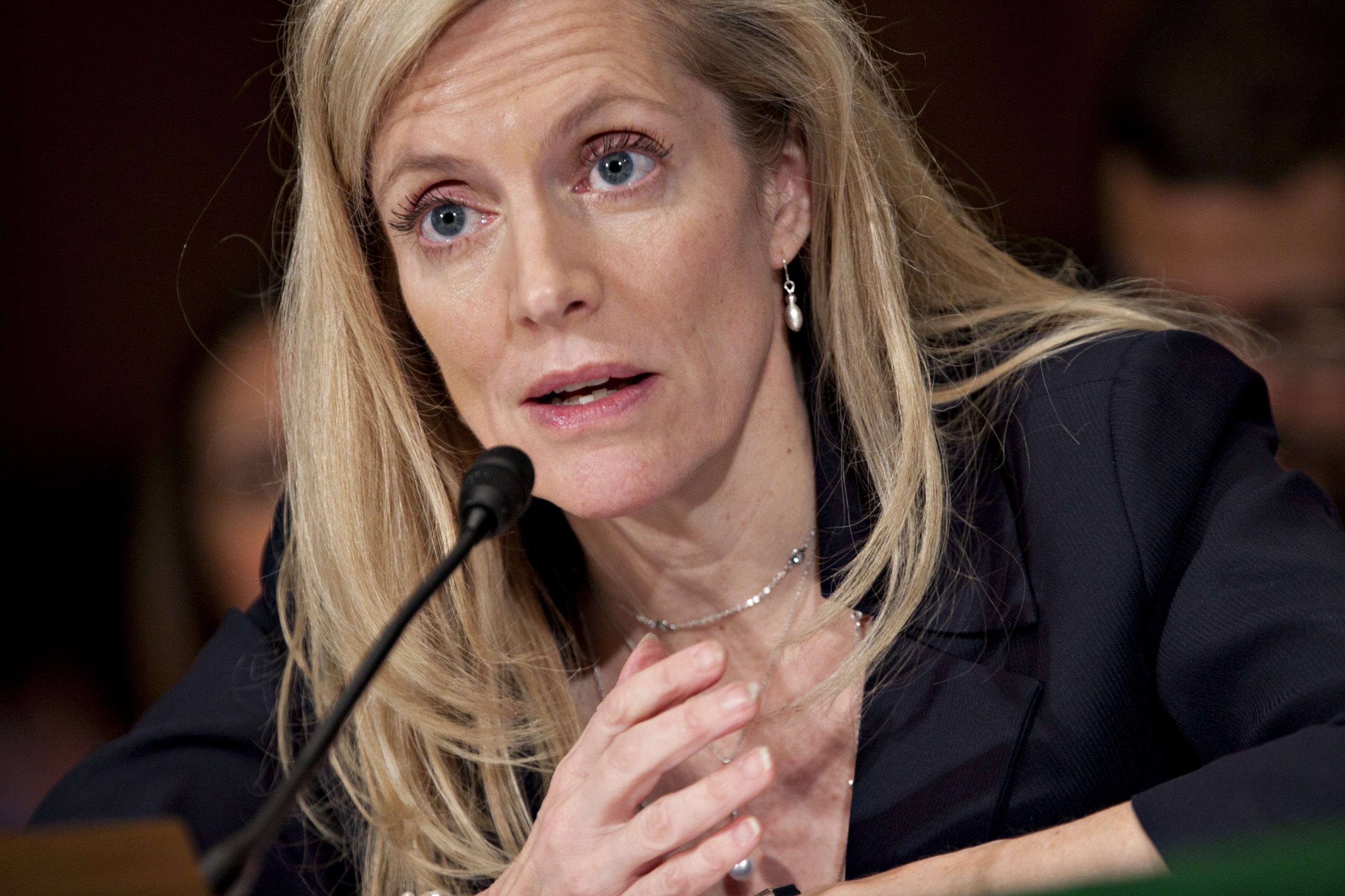
Lael Brainard, Federal Reserve Governor
Andrew Harrer | Bloomberg | Getty Images
The Federal Reserve should consider capping the level of interest rates the next time it is confronted with future economic downturns, Fed Governor Lael Brainard said Tuesday.
As part of a continuing look the central bank is taking at what potential responses it can come up with when very short-term rates go to zero, Brainard suggested using Treasury purchases to limit how high short- and medium-term government bond yields can rise.
She said tools such as quantitative easing showed limits that yield caps might not.
“The combination of a commitment to condition liftoff on the sustained achievement of our employment and inflation objectives with yield curve caps targeted at the same horizon has the potential to work well in many circumstances,” Brainard said in prepared remarks for a speech at the New York Association for Business Economics.
She also touched on a variety of other topics, saying the Fed’s three rate cuts this year amounted to “significant action” to help support the economy against the headwinds of slow global growth and tariffs, though she noted it will still take time for the effects to filter through the system.
Promising action
The yield cap idea is not new for the Fed; officials discussed the option at their October meeting, and literature on yield caps goes back to at least 2010.
However, such ideas are taking on more relevance as the Fed undergoes a series of discussions on what its tools will be the next time it needs to step in and boost the economy.
During the financial crisis, the Fed took its benchmark rate to near-zero and instituted three rounds of bond purchases totaling about $3.8 trillion. Officials recently have been reviewing how effective those moves were and what can be done the next time rates fall to what central bankers call the effective lower bound, or ELB, generally considered around zero.
“The review should make clear that the Committee will actively employ its full toolkit so that the ELB is not an impediment to providing accommodation in the face of significant economic disruptions,” Brainard said.
She added that the yield caps would help bring down longer-term rates that consumers pay for housing and other purchases. The three rounds of quantitative easing were ineffective in some sense, she said.
Under the cap plan, they would stay in place as the Fed achieved its goals on inflation and unemployment. Once they are reached, the securities “would roll off organically, unwinding the policy smoothly and predictably,” Brainard said.
In addition to the rate-cap talk, Brainard also weighed some options on how to generate healthy inflation, which has run persistently below the 2% Fed target for much of the decade-old recovery.
She suggested “inflation averaging,” or adjusting the target based on where the level has run. For instance, if inflation ran for a while at 1.5%, the Fed could lift expectations by announcing a 2.5% target, presumably where the rate would have to hit before the Fed consider tightening monetary policy.
“By committing to achieve inflation outcomes that average 2 percent over time, the Committee would make clear in advance that it would accommodate rather than offset modest upward pressures to inflation in what could be described as a process of opportunistic reflation,” Brainard said.


 Signal2forex.com - Best Forex robots and signals
Signal2forex.com - Best Forex robots and signals




